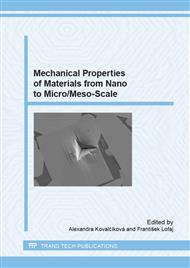p.185
p.189
p.193
p.197
p.201
p.205
p.209
p.213
p.217
Fatigue Strength and Damage Mechanisms of Laser Welded Structural Carbon Steel Sheets
Abstract:
Laser welding is one of advanced and promising joining technologies of metallic materials, characteristic by numerous advantages in comparison with conventional welding processes. The technology still can be considered as fairly new and so, investigations are needed to reach optimum properties of welds in specific application cases, depending on welding parameters. Certification welding procedures usually require to demonstrate sufficient microstructure, mechanical, impact loading and other characteristics, but not fatigue resistance, which is essential for welded dynamically loaded structures. The paper contains results of fatigue resistance investigation of laser welded 10 mm thick sheets of a carbon structural S 355 steel. High cycle fatigue tests were performed after optimizing laser welding parameters. Resulting endurance limit of the welds and heat affected zone was higher than that of basic material. However, high scatter of results and different damage mechanisms were shown for different load amplitudes. The results are discussed on the basis of fractographical analyses, which provided some quite interesting details about crack initiation mechanisms.
Info:
Periodical:
Pages:
201-204
Citation:
Online since:
September 2015
Keywords:
Price:
Сopyright:
© 2015 Trans Tech Publications Ltd. All Rights Reserved
Share:
Citation:


